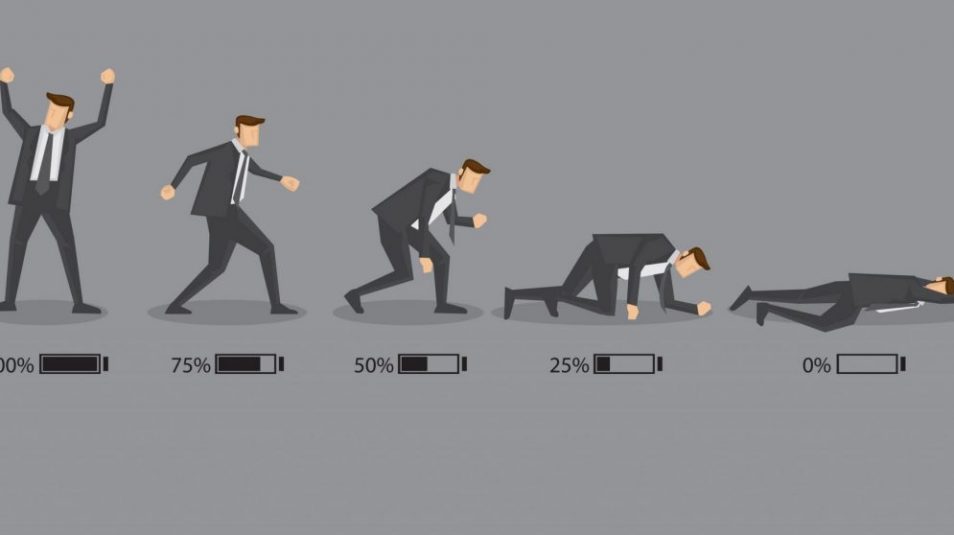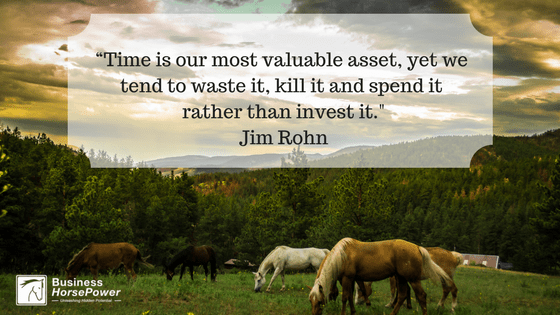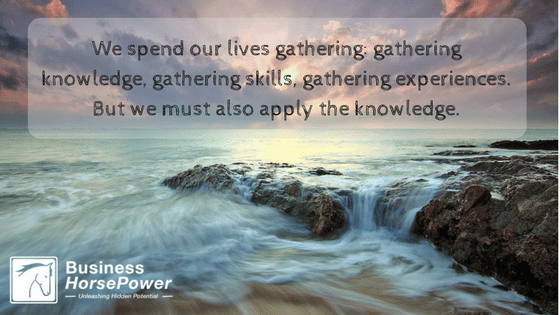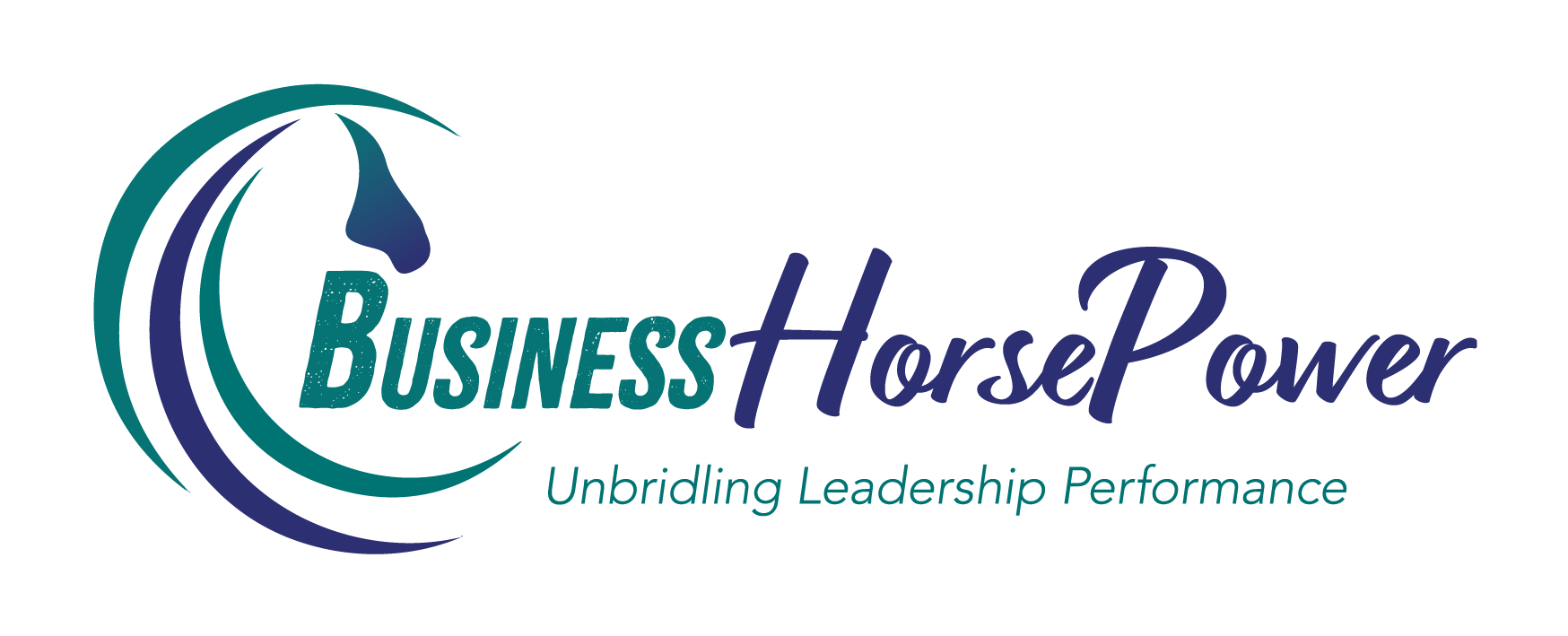
by Julia Felton | Aug 31, 2023
Increasingly business leaders are realizing that if they are to thrive in today’s volatile, uncertain, chaotic, and volatile (VUCA) economy they need to fully embrace the power of collaboration. The old models of command and control leadership fuelled by competition are simply not sustainable business models in a world where uncertainty dominates everything we do.
What is Collaboration?
The Cambridge Dictionary defines collaboration as “to work with someone else for a special purpose”. And it typically involves two or more people, teams, or organizations combining their resources to achieve the goal. It is a win-win situation where the sum of the parts ends up being more than the whole. One party contributes something that is built on and then leveraged by the other party. The end result is something much better than any of the parties could have achieved individually.
However, in my experience, many people think collaboration means one person or entity has to relinquish something to make the collaboration work. This would be an example of a win-lose relationship and that is not what we are striving for here.
Collaborative Examples In Nature
Nature understands how collaboration works and there are many examples that we can see around us. A few include:
- Ants and bees working in collaboration and in collective ways to establish their hives and colonies
- Sea anemones and clownfish cultivate cooperative relationships with each other to provide protection and nutrients
- Water buffalo have a symbiotic, collaborative relationship with egrets. The egrets pick parasites out of the water buffalo’s skin, which in turn provide a source of nourishment for them. They also provide a warning system of any impending danger for the water buffalo
One of the reasons why nature values collaboration is because it understands and appreciates the inter-dependence and inter-connectedness of everything. Nothing happens in isolation in nature. Everything has an impact on something else, which is a principle that many of us have not yet grasped. Because the reality of the situation is that everything that I do ultimately impacts and influences you in some way. You might not see the direct impact right now, but trust me it will. This is because everything in the world is comprised of energy and so each of us creates an impact ripple that expands either positively or negatively.
Collaborative Leadership
Collaborative principles can be applied to all areas of business including leadership. Long gone are the days when anyone leader can know everything there is to know. That is simply not possible in this Information Age where leaders are inundated with information. We are literally drowning it in.
A New York Times Weekly edition contains more information than the average person in the seventeenth century would have come across in their entire lifetime. In 2008 we consumed three times as much information as in 1960, and by 2020 it is estimated that we generated 44 times more data than we produced in 2015. This is why smart leaders are now embracing the concept of collaboration in leadership through a process called Shared Leadership.
Shared Leadership occurs when two or more people decide to work collaboratively together to lead the team or project. The benefit of this approach is that the “best” leader can step up and lead at the most appropriate time. For example, some leaders provide the best ideas when a project is just starting out; other leaders are better at setting and maintaining the direction; others are great at rallying the team and getting others on board; whilst other leaders are better at implementing and getting things done; finally others are better at refining and improving the product or service. Imagine how much more effective the leadership could be in your business if multiple people collaborated in the shared leadership process.
A fabulous model of how to embrace Shared Leadership exists in nature and specifically in herds of wild horses. They utilize the Diamond Model of Leadership as a way to collaborate and share leadership, using three different leadership positions.
- Leading from the front
- Leading from the back
- Leading from the middle
The lead mare sets the direction and pace of the herd from the front of the diamond formation. She pays attention to what is happening in the environment and then makes a decision on where to go next. The lead stallion keeps the herd together and protects it from predators and is positioned at the back of the diamond. He influences the energy at which the herd moves. The rest of the herd, the sentinels, cover the other two points of the diamond, and lead from the middle, covering the outer sides of the diamond. Their role is to align the herd in the direction that has been set and detect potential threats coming from the side In addition to responding to threats, the sentinels are often the ambassadors of the herd and are the first to welcome new members.
The ever-present goal of herd leadership is health, harmony, and unity. With the unpredictability that nature ensures, herd leaders are often presented with challenges that require them to either reposition themselves to respond to changes in the environment or possibly even change roles to leverage their strengths differently. For example, when a threat emerges, like the new presence of a stranger or predator, the sentinel will often move from the center of the herd to the front where the threat appears. The sentinel will often redirect the herd away from danger. Once the lead mare senses the direction to safety, she will emerge back in front of the herd to set the new course. Once safe movement begins, the sentinel will return to the centre position.
Collaborative leadership has enabled horse herds to exist for over 50 million years as they have learnt to adapt and evolve to thrive in the uncertain environments they have experienced.
I’d love to hear from you about other collaborative relationships you’ve seen in nature and how you can apply these to your business.
Julia Felton (aka The Business Wrangler) is the founder of Business HorsePower. Business leaders, entrepreneurs and executives hire her to accelerate their business performance by harnessing the energy of their people to work more collaboratively together. By aligning purpose with actions the team achieves exponential results as everyone starts pulling in the same direction.
Julia believes that business is a force for good and through designing purpose-driven businesses that leverage the laws of nature, and the herd, you can create businesses founded on the principles of connection, collaboration and community that make a significant impact in the world.

by Julia Felton | Dec 1, 2020
No one doubts that many of us are struggling with Zoom fatigue and meeting overwhelm as a result of working from home over the last six months. In my experience, many business leaders are not very skilled at running effective meetings. Now that the process has morphed on-line, their skills, in many cases, are definitely not up for the job.
The challenge is that with more and more people working remotely, it is essential that we hold regular meetings to ensure that everyone is kept in the loop and knows what is happening. There is so much conversation that is “lost” when we are not working in close proximity to each other. This “lost conversation” is what I refer to as the water cooler talk. It’s the time when you learn informally how other projects are doing, how other colleagues are feeling, and generally get a sense of what is going on in the business. It’s also a time that we can informally share resources with each other and provide guidance on different approaches to solve problems.
With this mechanism taken away from us, at least for the time being, how do leaders structure meetings to be effective, deliver results, keep team members engaged, and not waste people’s valuable time? One framework that I have found to really work is the EPIC Meeting Framework™, devised by the team at Engagement Multiplier. They use it for all their meetings as it puts an end to pointless gatherings that waste time and slow momentum. Instead, by adopting this simple framework, they have been experiencing a significant increase in team engagement and productivity over the last few months. So let’s unpack this 4 step framework and show you how you can use it in your business.
1) Energy
Why It’s Important: Boosting energy at the beginning of a meeting sets the stage for more productive conversations and, ultimately, better meeting outcomes.
How Do You Do It: Get everyone to speak at the start of the meeting by sharing one thing they’re feeling great about right now (it can be work related or personal related).
The Outcome: Team members will be engaged and start contributing to the meeting leading to better results.
2) Purpose
Why It’s Important: Every meeting needs to have a purpose, as well as clearly defined outcomes, as it is impossible to run an effective meeting unless everyone is clear on why they are there and the outcome required.
How Do You Do It: Distribute an agenda in advance that states the purpose, objectives, and what needs to be true at the end of the meeting, as opposed to simply listing points for discussion.
The Outcome: Team members come prepared and solution focused. Consequently, meetings become faster and more efficient when the focus is placed on outcomes.
3) Insight
Why It’s Important: During the exchange of ideas and perspectives, new opportunities emerge that create transferable insights. Sharing these insights amplifies the value and productivity of any meeting.
How Do You Do It: At the end of the meeting, ensure that everyone shares at least one unique insight or learning they’ve derived as a result of attending.
The Outcome: Being able to capture opportunities and connections in real time between people can help spark more innovation, and amplify the value of the meeting for all attendees.
4) Connection
Why It’s Important: Getting team members aligned behind a shared purpose ensures everyone is on the same page and builds connection within the team. Team members are more confident their inputs and efforts will be appreciated, so are more willing to speak up and express their opinions. Culture and purpose are thus reinforced.
How Do You Do It: By encouraging adoption of these habits and the structure for the meeting.
The Outcome: Barriers to progress caused by poor communication and lack of direction are overcome and the team adopts a much more agile culture towards working.
So my invitation to you as leader is, go and try the EPIC Meeting Framework™ and let me know what is does for your next meeting. I’m sure you will be pleasantly surprised by the results, and the increased levels of engagement that you get from your team members.
Julia Felton (aka The Business Wrangler) is the founder of Business HorsePower. Business leaders, entrepreneurs and executives hire her to accelerate their business performance by harnessing the energy of their people to work more collaboratively together. By aligning purpose with actions the team achieves exponential results as everyone starts pulling in the same direction.
Julia believes that business is a force for good and through designing purpose-driven businesses that leverage the laws of nature, and the herd, you can create businesses founded on the principles of connection, collaboration and community that make a significant impact in the world.

by Julia Felton | Oct 1, 2019
Do you often feel that the day gallops away with you and you don’t get done what you wanted? Do you get frustrated by all the items that distract you in your day? Well, the good news is that you are not alone—but the challenge is that you are being reactive in your business, rather than pro-active.
Great leaders understand that they need to grab the reins and take charge of their business if they are to be successful. They need to lead their day, rather than let the day lead them. And whilst this is easy to say, it’s often more difficult to do in practice.
In fact, I didn’t realise how much I let distractions like email and social media run my day until earlier this month. I moved house and didn’t have any internet access for three weeks. My mobile phone signal was just one bar, so I also only had limited internet access through my phone. What a revelation. I got so much done, and this was just highlighted by the day my internet satellite was installed—and I suddenly got dragged back into the distractions of email and social media and had the least productive day ever.
So, here are my top tips to help you create unbridled productivity.
Turn Off All Notifications
I know it sounds obvious and you’ve been told this before, but turning off all the notification settings on your computer and phone can be transformational. Did you know that research by Google revealed that, once you are disturbed from a task, it takes you 20 mins to get back to the level of focus you had before the interruption?
Stop Task Switching
Just figure out how much time you waste daily switching between tasks caused by the interruptions (as noted above). Only work on one task at a time until it’s complete.
Block and Tackle
To avoid task switching, block and tackle your day by booking out times in your diary to get tasks done. In my experience if something is booked in my diary, it happens—if it isn’t, it doesn’t. So block time each week for managing your accounts, business development, blog writing, coaching team members, or whatever it might be for you. Research reveals that 90 minute chunks are the optimal time for focus, so break your tasks into this time frame. If you think a project will take longer, then schedule multiple 90 minute blocks with breaks between them.
Track Your Results
Set goals for each day, week, and month, and then be ruthless in tracking these metrics. When you first start tracking your activities, you may well be surprised at what you are doing. Be courageous and stay with it, as the more you focus on these metrics, the more energy you will put into achieving them—and then within a short period of time you will experience rapid results.
Plan Out Your Day
Set an intention every day for what you will achieve that day, and then prioritise your activities so that you achieve this. Your priorities should be the activities that will enable you to achieve your bigger goal and vision, and they should be done first thing each day.
Finally, consider adopting the 90-Day Year Principle where you think about your business as having only 90 days. You then break down the 90 days into 6 two-week sprints. It’s easy to focus on what you want to achieve in 2 weeks, and this then drives your daily and weekly plan. Having a plan makes it easier to prioritise what you want to achieve each day, and if you also have some accountability in place, you will also be more motivated to achieve this.
Just imagine what would be possible in your business over the course of a year if you made just a 1% improvement in your productivity per day. The compound effect would kick in and you would experience a 10x improvement.
What practices are you putting in place today to help you and your team experience unbridled productivity?
Julia Felton (aka The Business Wrangler) is the founder of Business HorsePower. Business leaders, entrepreneurs and executives hire her to accelerate their business performance by harnessing the energy of their people to work more collaboratively together. By aligning purpose with actions the team achieves exponential results as everyone starts pulling in the same direction.
Julia believes that business is a force for good and through designing purpose-driven businesses that leverage the laws of nature, and the herd, you can create businesses founded on the principles of connection, collaboration and community that make a significant impact in the world.

by Julia Felton | Oct 27, 2018
No-one doubts that we live in a world that is moving at lightning pace. In fact, the speed of change has never been faster. As a result, the most common theme I keep hearing my clients and colleagues say, is there are not enough hours in the day. How can I get everything done?. I need to learn to manage my time better. I need to become more productive.
Yet ironically none of us can learn to manage time. As a leader, you all have 24 hours in a day – 1,440 minutes. This is a constant which is never going to change.
What you can do however is manage your energy. Energy is the amount of effort we expend into doing something. Approach a task with high levels of energy and you can often get the task completed with superhuman speed. Approach the same task with lacklustre energy and it seems to take forever. I’m sure you can all think of a situation where this has happened for you.
So here are my five tips for managing your energy levels so that you can become as productive as possible each and every day, and so get more done in less time.
- Minimise the Number of Decisions You Have To Make Daily
Did you know that we make over 10,000 trivial decisions every day and that our decision-making ability decreases throughout the day? Therefore the smart thing to do is to focus your energy on the business critical decisions you need to make every day and minimize the number of inconsequential decisions you make. A simple activity like having a “uniform” for work can stop you wasting time on thinking about what to wear each morning. It’s no surprise that Steve Jobs wore his trademark black turtleneck and jeans, or former US President Barak Obama only wore blue or grey suits.
- Block and Tackle Your Schedule
To be more effective make sure you schedule everything in your diary. I mean everything. This means that you don’t have to wake up each morning wondering what to do, that’s already done. You know what time you have meetings, what times you are working on sales and marketing etc. Better still cluster similar activities together and plan your week so you have specific days for different tasks. At Entrepreneurs Institute Mondays is the finance day when everyone has to report on their weekly metrics and Wednesday is a creative day when people work on new projects and ideas.
- Avoid Task Switching
Nothing wastes more time and energy than multi-tasking. Start one task and stick with it for an allocated time without interruptions. That means no answering the phone, emails or jumping on social media. A study by Google revealed that when you switch tasks it takes you 20 mins to get back to the state you were in before you engaged in the interruption. That is all wasted time, as well as energy as you seek to get back into the inspired state you were previously in.
- Focus on Activities That You Enjoy
You naturally have more energy and enthusiasm for a task when you really enjoy it. So set up your team so that you have people available to work on the tasks that you least enjoy, as these will be the ones that deplete your energy. So often you are told to develop your weaknesses but I really believe that if we can focus on what we love then we will get more done.
- Eat Good Quality, Healthy Foods
You need to fuel your body with healthy foods if you are to maximise your energy levels. How about starting each day with a healthy green juice and maybe a brisk walk or some yoga stretches. This will release endorphins that will help boost your momentum for the day.
So next time you take on a task think about what the ROEE, return on energy employed is. Does the task inspire and motivate you or will it leave you feeling depleted and exhausted?. After all, you only have so much energy so use it wisely.
Julia Felton (aka The Business Wrangler) is the founder of Business HorsePower. Business leaders, entrepreneurs and executives hire her to accelerate their business performance by harnessing the energy of their people to work more collaboratively together. By aligning purpose with actions the team achieves exponential results as everyone starts pulling in the same direction.
Julia believes that business is a force for good and through designing purpose-driven businesses that leverage the laws of nature, and the herd, you can create businesses founded on the principles of connection, collaboration and community that make a significant impact in the world.

by Julia Felton | Aug 4, 2018
The summer months can signal the death knell for a business unless managed properly. As leaders and business owners, we all know that it is important for us and our team members to have balanced life; but have you ever stopped to consider how the summer months can literally kill the momentum in your business?
Think about an aircraft. It uses a large proportion of its fuel to simply get off the ground. Once airborne, only a tiny amount of energy is then required to keep it flying. And it’s the same in your business, too.
Projects take time, energy and resources to get going, and then when you think everything is going swimmingly, summer kicks in — and unless managed carefully, the momentum can be lost.
It’s a bit like the plane crashing en-route to its destination. The results can be devastating because, not only is productivity lost during these summer months, but the impact lasts into the third quarter of the year — meaning that close to six months of the year can be impacted by the loss of momentum during the summer.
If you don’t believe me, then let’s look at the research by American Express that reveals during the summer months there is:
- 20% decline in workplace productivity
- 19% drop in employee attendance
- 13% increase in the time it takes to complete projects
- 2.6 times increase in the time taken for lunch
And if that wasn’t bad enough, the research also revealed that there is a:
- 200% increase in shopping during work hours
- 120% increase in employees searching for another job
Which is why the summer months can have such a negative impact on overall business performance, unless managed appropriately.
Here are five things leaders can do to help maintain momentum during the summer months
1. Schedule Employee Vacation In Advance
Make sure you get everyone’s vacation days planned in advance. This way you can best minimize the impact on the business, and you will have clarity on what is happening. Plus, team members can support each other in managing workloads prior to going on their vacation.
2. Insist Employees Unplug When They Are on Vacation
It is essential that team members take vacation so they can recharge, and in today’s world it is important to ensure that your team members really do dis-connect and unplug from the business. Way too many people go on vacation but stay connected to the office by technology, meaning they never really switch off. To operate at high performance, employees need to rest and relax so they can replenish their energy sources. Ensure team members put out-of-office notifications on their emails so they don’t feel compelled to respond to email whilst they are away.
3. Create Focus By Having Clearly Defined Projects/Activities
Focus gives team members clarity and certainty, so make sure that the team has some fun goals to achieve over the summer. Maybe even consider setting some challenges for the team to keep them engaged, and give out prizes or incentives for those team members who complete the challenges.
4. Be Flexible With The Hours Worked
As a leader, we all know that it is not the hours worked that is important but rather the outputs delivered. Allowing team members to leave early, once certain milestones are met, will help keep the team focused and working at a high level. It will also encourage cooperation as the team pulls together to achieve the objectives, and everyone wins.
5. Model The Way
As a leader, your team looks to you to create a positive example for them. So model the way and set yourself higher goals for the summer. It’s often easier to get meetings during the summer because others are in the mentality of slowing down, so leverage this to your best advantage. Arrange meetings, attend events, and stay positive. Your team will see your drive and excitement and feed off this, thereby maintaining their own personal momentum.
Implement these five strategies if you want your business to grow over the summer; and remember, your momentum becomes your team’s momentum. So lead your team towards a productive summer.
Julia Felton (aka The Business Wrangler) is the founder of Business HorsePower. Business leaders, entrepreneurs and executives hire her to accelerate their business performance by harnessing the energy of their people to work more collaboratively together. By aligning purpose with actions the team achieves exponential results as everyone starts pulling in the same direction.
Julia believes that business is a force for good and through designing purpose-driven businesses that leverage the laws of nature, and the herd, you can create businesses founded on the principles of connection, collaboration and community that make a significant impact in the world.

by Julia Felton | Nov 15, 2017
Small and medium-sized businesses are the life-blood of our economy, but they face specific, ever-increasing challenges. The world is in the mists of an employee engagement crisis, with serious and potentially lasting repercussions for the global economy.
Without a doubt, one of the greatest challenges SME’s currently face is the attraction and retention of talent. Intelligent, honest, hard working staff are critical to an organisation’s ongoing success, but now more than ever, good people are hard to find – and they are even harder to hold on to! To ensure employee job fulfilment, loyalty and maximum ROI, the key ingredient that is so often missing is Engagement.
In a recent Gallup poll, it was revealed that only 8% of UK employees are engaged at work, and most disengaged employees would change employers right now for as little as a 5% pay increase.
- The Engaged Employee – Does more than is expected. Works with a passion and feels a profound connection to the organisation they work for. They drive innovation and move the organisation forwards, providing maximum return on salary investment
- The Disengaged Employee – Does just what’s expected. Is essentially there in body only. They’re sleep walking through their day. Marking time, but not energy or passion, into their work. They provide minimum return on salary investment
- The Actively Disengaged Employee – Does less than expected. They aren’t happy at work; they’re busy acting out their unhappiness. Every day these workers undermine the efforts of their engaged co-workers, often providing negative return on salary investment.
Many organisations believe that strong leadership, and an exclusive focus on the development of their leaders is the key to a winning culture. They are mistaken. Leadership is not the heart of your organisation. The heart of your organisation is its people and their contribution. Without actively engaged employees, the leadership message cannot be heard..
Trained leaders today have been overloaded with leadership knowledge and theory, but too often they are not sufficiently activated. We need to turn our attention equally to our staff, getting them actively engaged regularly through new, innovative and inclusive methods, thus creating shared vision and buy in. It’s called ‘leadership living’ and all levels of the organisation participate together in the workplace. It is an all action methodology, which means all team members will live, breathe and grow together as a united force. It breeds true engagement, uncovers more leaders and builds a powerful and united culture. To ensure maximum impact and lasting change, everyone needs to be involved and everyone needs to be accountable.
So how do we engage our staff, encouraging maximum productivity, loyalty and ROI? It starts with changing habits as a collective, creating a movement. It’s about working as a unified team to change everyone’s individual and collective behaviours. The only way you can do this is through structured, strategic and regular discussions built on shared ownership, individual empowerment, and regular feedback sessions.
Also, traditional hierarchy has to go. The traditional organisational structure is not the most efficient option for businesses in the 21st century. Instead, successful companies are moving to an organisational structure that allows employees to make more of their own decisions and avoid the rigidity of traditional models. Generations X, Y and Z respond and are motivated differently to Baby Boomers. Equality creates unity, and unity will bring the truth out in your organisation. Think of truth as the splinters that need to be removed from your business. It may hurt, but we need to hear it, otherwise the pain will continue and exacerbate. We need to create an atmosphere for the truth to be tabled discussed and addressed without judgement.
If you’d like to explore how to get your teams more engaged then lets have a conversation as I utilise cutting edge group activation systems to get team members engaged and the results are engagement levels increasing my over 200%, whilst simultaneously the company experiencing growth in productivity and profitability.
Julia Felton (aka The Business Wrangler) is the founder of Business HorsePower. Business leaders, entrepreneurs and executives hire her to accelerate their business performance by harnessing the energy of their people to work more collaboratively together. By aligning purpose with actions the team achieves exponential results as everyone starts pulling in the same direction.
Julia believes that business is a force for good and through designing purpose-driven businesses that leverage the laws of nature, and the herd, you can create businesses founded on the principles of connection, collaboration and community that make a significant impact in the world.

by Julia Felton | Sep 26, 2017
Are busy teams really productive? This is something I often reflect on for both myself and my clients. I know that in the past I have confused busyness with being productive but increasingly I have come to realise that they are not the same things.
As Socrates, the ancient Greek philosopher notes “Beware the barrenness of a busy life.” A team or individual can be really busy but not productive, and so not achieve the results they were hoping for. Just think about it. You can spend all morning on social media and clocked up hours in the office but have you really been productive and moved your business towards its goals.
Here are 5 ways to decide if you are being busy or productive:
1. How measurable are your goals? Everything you do should be aimed toward accomplishing something profitable. Clarify your goals with your team if they are confused about the current priorities. If you can’t tell how a team member’s daily activity moves you toward your goal in some way, it’s likely they are busy rather than productive. Always track the results of your efforts to reach your goals with easily readable metrics.
2. What tasks can you remove? Examine every task your team undertakes. Is it really necessary? If not, is it still productive or profitable? If it fails that test, it’s subject to elimination or severe streamlining. For a number of years, I created a monthly newsletter full of great content but I never bothered to ask you if you found it valuable. Once I did I changed tact and now deliver you Wednesday Wisdom which is shorter and more concise.
3. How’s your Return on Investment? Does your team’s output consistently earn the organisation more than it pays all of you? If not, start honing your Personal ROI (PROI). Outsource tasks that people outside your team can do more effectively and less expensively, stop doing tasks below your pay-grades, and as a leader, don’t micromanage. Always look for a more productive or profitable alternative to every task. For example, I’m not an expert at building marketing funnels I could spend time figuring it out, but it’s not worth my time, versus a trained expert who can build in quickly and effectively.
4. Check your meeting meter. As you rise in leadership, you’ll be spending more time in meetings, because they represent your “work,” where decisions are being made. But they can definitely steal your time if you’re not careful. If a meeting doesn’t come with a purpose, an agenda, and decisions to be made, skip it. Leave at the promised end time. Encourage others to be brief and to the point with their concerns and comments.
5. Is your social media helping or hurting? Maybe social media represents the wave of the future, but it can be a huge timewaster. Is it even something that your team directly profits from using? Is it necessary for doing your job, such as marketing, PR, or HR? If not, skip it at work. Not everyone needs to be using Facebook pages and Twitter at work. Appoint someone to deal with it using the latest tools to maximise time use, or outsource it if you can do so less expensively.
6. Are you proactive or reactive? Do you and your team leap into action only when prodded, or do you review your strategy on a regular advance basis, so you constantly greet change with enthusiasm?
RESULTS RULE.
At the end of the day it all boils down to this: productive teams produce results. Busy teams produce more busywork. Unless you work for an organisation where results aren’t always immediately apparent, like an international charity, it shouldn’t take you more than five minutes to determine whether or not you and your team are productive.
Finally, as John Wooden, an American college basketball coach notes. “Don’t confuse activity with achievement.”
–
Julia Felton (aka The Business Wrangler) is the founder of Business HorsePower. Business leaders, entrepreneurs and executives hire her to accelerate their business performance by harnessing the energy of their people to work more collaboratively together. By aligning purpose with actions the team achieves exponential results as everyone starts pulling in the same direction.
Julia believes that business is a force for good and through designing purpose-driven businesses that leverage the laws of nature, and the herd, you can create businesses founded on the principles of connection, collaboration and community that make a significant impact in the world.

by Julia Felton | Feb 28, 2017
Jim Rohn, one of the pioneers of personal development once said: “Time is our most valuable asset, yet we tend to waste it, kill it and spend it rather than invest it.” and this is as true today as it has ever been.
Time is a very elusive quality. We each have the same amount of time and yet how we use it is very different. How successfully we use the time we have determines our level of success – whether financial, spiritual or emotional.
I was recently reminded of the fact that there are 86,400 seconds in every day. Just imagine that these seconds are money deposited in your account. Every day the same amount of time/money is deposited in your account but the rub is that unless you use the time/money that day you lose it. It doesn’t accumulate. With this mindset what would you do differently to leverage the best use of those 86,400 seconds? Would you watch TV, or would you use it to grow your business or spend time with friends and family? Whatever your decision, it’s one that merits some real thought as all too often we just waste time, kill it and spend it, rather than investing it.
Here are some examples of how to invest your time?
- Read a book
- Learn a new skill
- Develop yourself with coaching and mentoring
- Build relationships with new prospects
- Create new solutions that add value to your clients
This is why I am really excited to be hosting an event next week for a select group of women to help them gain clarity on their top priorities. The art of self-connection is a one day workshop with the horses where I will personally help you get clear on your passion and purpose, understand what is driving you and help you prioritise what to do each and every day to achieve success.
This is a day away from the stresses and strains of daily life, where you are able to slow down, reflect and experience the power of real connection to self and others. A place where you you can invest in yourself and drop into horse time. It is only in this space that we can truly listen to our intuition and so make decisions that are really aligned with what we truly want.
Horses are masters at utilizing time so that it serves them rather than them being a slave to time, so come and experience what is possible when you learn from the masters. You can find out more and reserve your place here. The early bird pricing expires at midnight tonight so act now to secure your place. If you have any questions just give me a call or drop me an email.
Wishing you a super-productive week and I’d love to hear what you are doing to get maximum return on your 86,400 seconds per day, so please get in touch.
Julia Felton (aka The Business Wrangler) is the founder of Business HorsePower. Business leaders, entrepreneurs and executives hire her to accelerate their business performance by harnessing the energy of their people to work more collaboratively together. By aligning purpose with actions the team achieves exponential results as everyone starts pulling in the same direction.
Julia believes that business is a force for good and through designing purpose-driven businesses that leverage the laws of nature, and the herd, you can create businesses founded on the principles of connection, collaboration and community that make a significant impact in the world.

by Julia Felton | Feb 22, 2017
If you who have been part of the Business HorsePower herd for a while you will know that I love learning and acquiring new knowledge. I am always looking for ways to improve myself and the information and services that I share with you, my valued clients.
That is why I have just come back from a four day retreat where I have been developing my speaking skills and learning new strategies to help grow and develop my business. It was a really intense four day experience where I learnt loads. In fact I have come away with nearly an entire notebook full of new information and ideas that I can implement in my business.
Now learning and gathering information is great but here’s the rub. That is not enough. The knowledge and information I have learnt is only of any good if I take action and implement it in my business. And that’s the irony of going on courses. Not only do you have to take time out of your business to go on them, you then need to schedule time when you get back to the office to implement and put all those ideas into action. And if you fail to take action then you have just wasted valuable, time, energy and money.
I will admit to being guilty and oftentimes not implementing what I have learnt, but when you take action, that is when the rubber hits the road and real change and transformation happens. Your business and life will never change by just learning about something. They only change when you take action. And speed is your friend here. The sooner you take action and start implementing what you have learnt, the sooner you will get results.
So have you been implementing all the ideas that I have been sharing with you this year about how to be more productive in order to achieve your goals? If not I suggest you go back and read some of the previous editions of Wednesday Wisdom and start taking small steps now to implement all that I have been sharing.
Taking action is something that I did earlier this year when I was presented with the opportunity to be part of the Purpose, Passion, Profit Summit. And today is the day that you can hear my interview with Helen Vandenburghe on how Entrepreneurial Attention Deficit Disorder (ADD) is impacting the results you are getting in your business. If you haven’t already signed up to the summit you can do so here. I am joined by over 30 other amazing women who have all been sharing great, actionable content on how to get into flow and grow your business. You won’t want to miss this. Grab a pen, listen to the recording, make notes and then take action. Start now by registering for the summit if you have not already done so. You’ll be glad you did
Julia Felton (aka The Business Wrangler) is the founder of Business HorsePower. Business leaders, entrepreneurs and executives hire her to accelerate their business performance by harnessing the energy of their people to work more collaboratively together. By aligning purpose with actions the team achieves exponential results as everyone starts pulling in the same direction.
Julia believes that business is a force for good and through designing purpose-driven businesses that leverage the laws of nature, and the herd, you can create businesses founded on the principles of connection, collaboration and community that make a significant impact in the world.

by Julia Felton | Jan 25, 2017
Did you know that a 2011 study by K. Douglas reported in the New Scientist revealed that we make up to 10,000 trivial decisions every day. Wow, that takes a lot of brain power, so it is hardly surprising that we become fatigued and overwhelmed. So what can we do to simplify our lives so that we need to make fewer decisions.
During a programme that I am following called the 90 Day Year I have recently come across the concept of the The Prada Protocol. This is a concept and way of thinking that has the power to free you from a lot of the distraction and overwhelm in our days, weeks and life.
If you’ve ever struggled with feeling overwhelmed with all of the decisions you’re confronted with daily, even if they’re the small ones like, ‘what to wear’, ‘what to eat’ or ‘where to find something’. Then embracing the concept and thinking inside of the Prada Protocol will be a difference maker for you.
There are literally hundreds of ways to think about applying the principles to your life and business. There are areas of my own life I’ve even forgotten that I’ve applied this principle, because I’ve deliberately applied it for so long. (Which is an example of the power of it. No longer do I worry, think, stress over the trivial parts of life. I’m free to focus my attention and energy on things that truly matter.)
Below is a list of curated ideas I’ve captured to turn the light bulb on in your head for how to apply this principle across multiple areas of your life.
- What To Wear: How many hours a week do you waste time deciding what to wear?. I bet if you’re a woman it’s a lot, and then often you feel you made the wrong choice. I know I have often experienced this. Trying on loads of different clothes combinations and then finally make the wrong choice. When I was working in London it was easy. I had a handful of suits that I wore everyday. Not too many decisions to make each morning. And when I’m leading workshops with the horses I pretty much have a standard uniform that I wear – jeans, boots, fleece and usually a gillet. Having a “uniform” makes deciding what to wear easy and saves you time, energy and money.Mark Zuckerberg, founder of Facebook, summed up the value in wearing the same “uniform” every day when he said “I really want to clear my life to make it so that I have to make as few decisions as possible about anything except how to best serve this community,”
- Knowing What Clothes to Buy: In the past I used to waste loads of money buying clothes I never wore. However, a few years ago I had my colours professionally done. I now know the palette of colours that suit me so I stop wasting time looking at clothes that don’t fall in this spectrum. Best of all it means that I know that every item of clothing I buy will co-ordinate with the other pieces I already have. Plus it also means I’m buying clothes that suit my style.
- What To Eat: now I must confess to being a real amateur in this area of automating my life. My friend Zoe is meticulous at planning and preparing all her meals for the following week the weekend prior. The result is that she always knows what her and her husband are eating and she doesn’t waste money on buying food that then is not used and goes off. I’m not sure I could be that disciplined but I do know that in the past I have had organic veg delivered weekly, and have also experimented with having meals delivered. Both of which ensured I always ate healthy, nutritious food. Maybe that is something I should start again.
- Managing Your Finances: Setting up simple systems to help manage your finances can be a God send. Each month I have a number of transfers set up that direct money from my business account to both my personal bank account but also my savings and business expenses account. For my business expenses I track all the activity in Xero and Crunch Boards, whereas for my personal money I use Money Dashboard. It means I can quickly and easily see where I am spending my money. Plus because all the payments are automated it means that I don’t overlook paying something. Just one more thing I don’t have to think about.
- Outsourcing Various Aspects of Your Life and Business: I have talked in many other posts about the importance of team and focusing on your strengths. Outsourcing allows you to get additional support in your business and life, enabling you to focus on your brilliance. It also avoids the stress of you wasting time trying to complete a task that simply you don’t have the optimal skill set to do. The great thing is that technology enables lots of activities in your business to be automated – such as customer follow up – but also you can outsource low value activities in your business and life such as email and cleaning your house. Just imagine how much simplier and easier your life would be if you knew the house got cleaned weekly; or you knew your email was being handled daily.
So my thought for this week is how can you simplify your life. What activities can you automate, delegate or ditch, so that you no longer need to make decisions about them, and so create the space for you to focus on the really important things that matter to you.
If you’d like to start living a more simple life and start acting like real high performers do, then please share with me in the facebook group what insights you had from this post. And importantly start implementing them into your life.
Julia Felton (aka The Business Wrangler) is the founder of Business HorsePower. Business leaders, entrepreneurs and executives hire her to accelerate their business performance by harnessing the energy of their people to work more collaboratively together. By aligning purpose with actions the team achieves exponential results as everyone starts pulling in the same direction.
Julia believes that business is a force for good and through designing purpose-driven businesses that leverage the laws of nature, and the herd, you can create businesses founded on the principles of connection, collaboration and community that make a significant impact in the world.
















